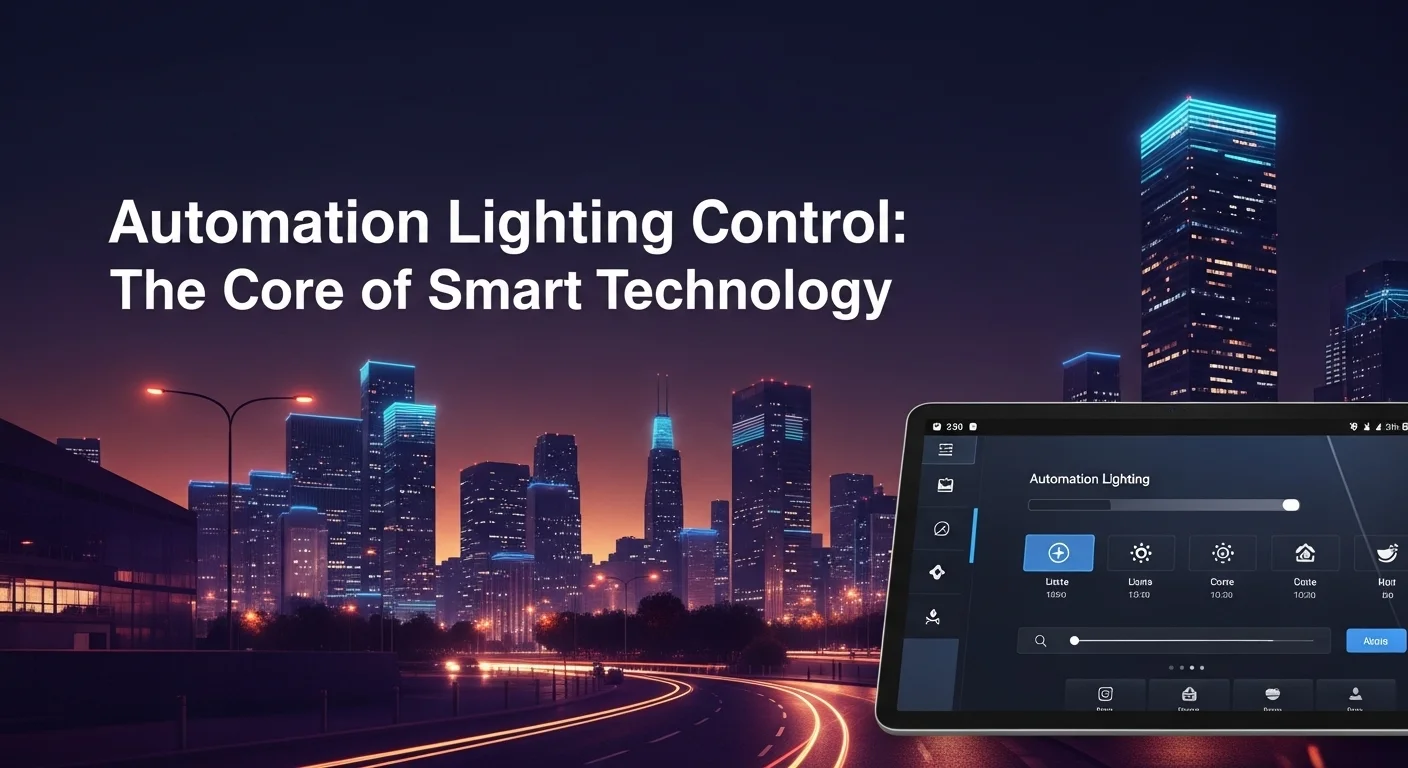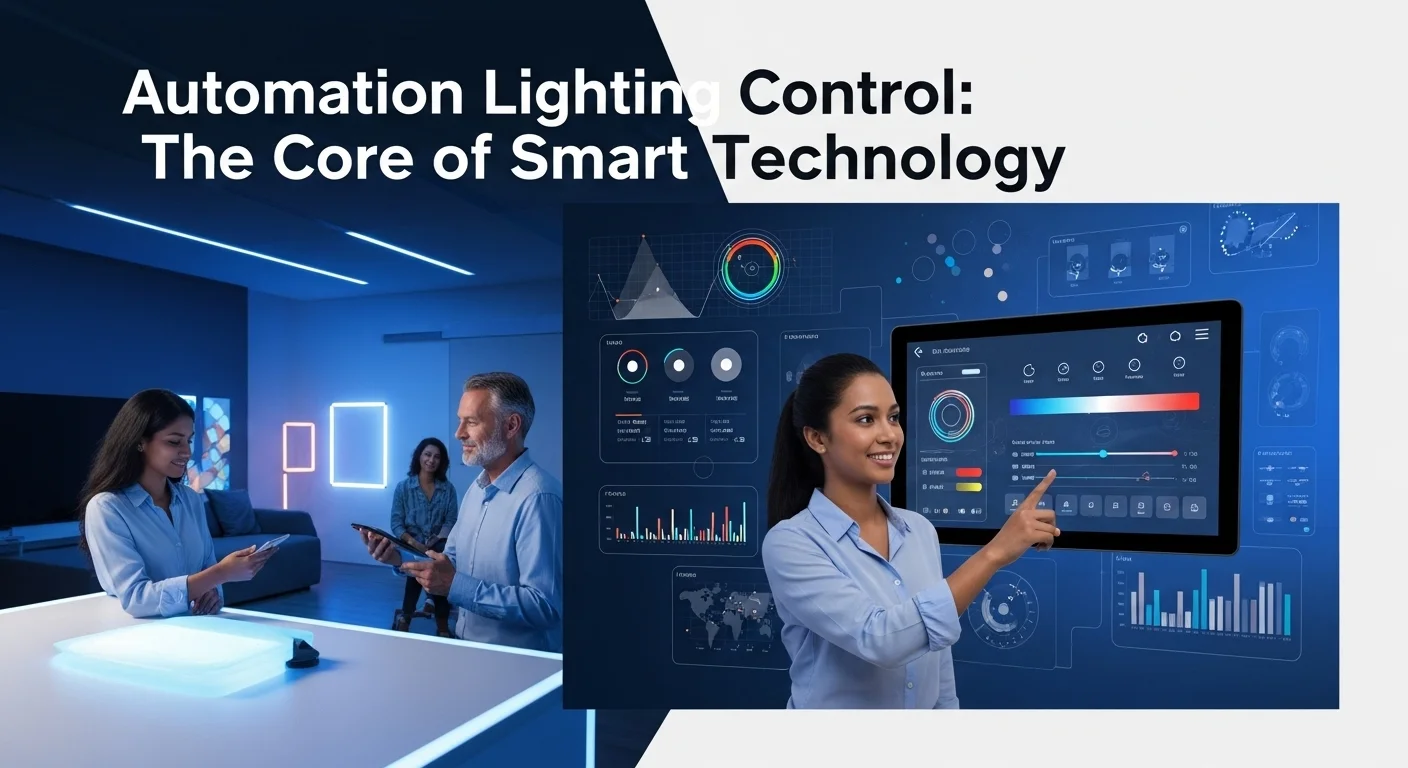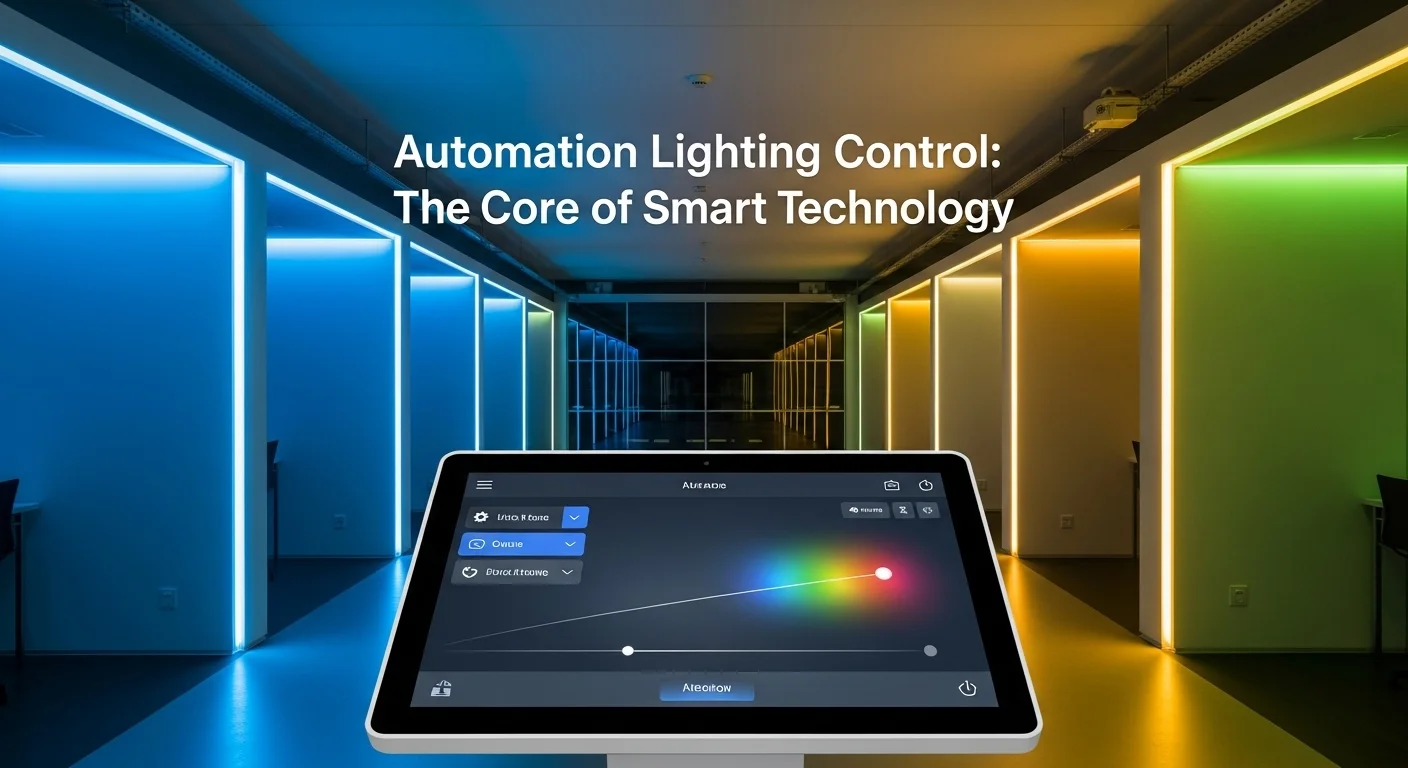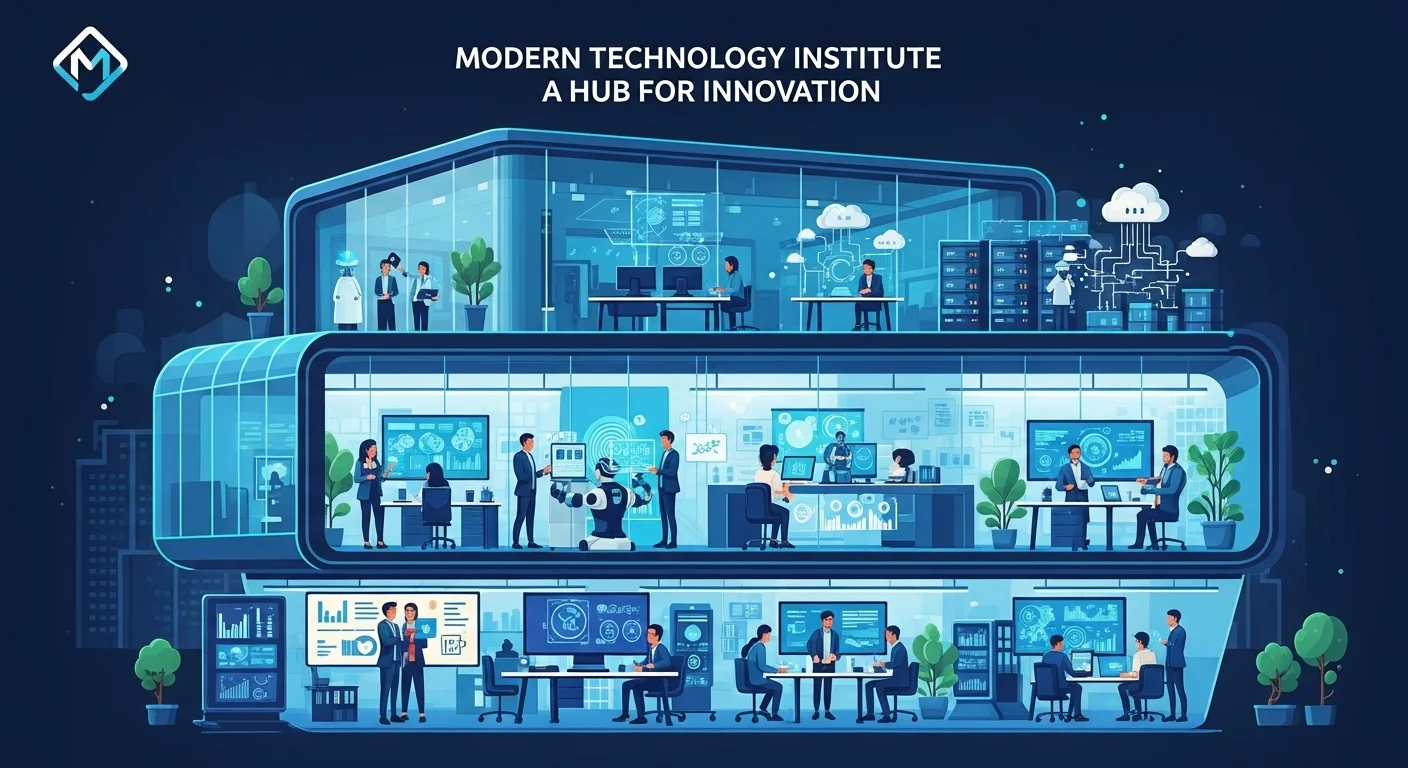Automated Lighting Control: A Guide to Creating Smarter, More Efficient Spaces

Executive Summary
I've spent over a decade designing and implementing 'smart' environments, and I can tell you that true innovation often starts with something we take for granted: light. Automated lighting control isn't just a fancy gadget; it's a fundamental shift in how we interact with our homes and workplaces. It’s about creating spaces that respond to our needs, save us money, and make our lives easier and more secure. Forget just flipping a switch. We're talking about systems that know when you're in the room, adjust to the daylight pouring through the window, and create the perfect mood with a single voice command. Whether you're a business owner looking to slash energy costs and boost productivity, or a tech lover wanting to build the ultimate smart home, this is where you start. In this article, I'll break down everything you need to know, drawing from years of experience. We'll cover the basics, dive into the tech that powers it all, and explore practical strategies for getting it right. This is your personal guide to harnessing the power of smart illumination.
Table of Contents
Table of Contents
- What Exactly Is Automated Lighting Control?
- A Practical Guide to Automated Lighting Systems
- Mastering Your System: Pro Tips, Security, and What's Next
- The Critical Role of Cybersecurity
- The Future: AI, the Cloud, and Beyond
What is Automation Lighting Control and Why Does It Matter?
In my line of work, I’ve seen technology change how we do almost everything. But few things have had such a quiet yet profound impact as Automation Lighting Control. Simply put, an automated light control system is a smart network of lights, sensors, and controls that work together to put the perfect amount of light exactly where you need it, when you need it—often without you lifting a finger. This isn't just a step up from the old wall switch; it's a giant leap into a world of efficiency and intelligent environments. It’s a cornerstone of the Internet of Things (IoT) and the smart building revolution, and honestly, it’s one of the most practical first steps anyone can take toward creating a truly smart space, whether it's a huge corporate office or your own living room.
So how does it work? Think of it as a team. You have sensors (the 'eyes' and 'ears'), like occupancy sensors that know when someone's in a room or daylight sensors that measure how bright it is outside. These sensors constantly send information to a controller (the 'brain'). The brain processes this data using pre-set rules and tells the actuators—like dimmers and switches—what to do. For example, in an office I recently helped design with a building automation lighting control system, the lights near the windows automatically dim on sunny afternoons. This technique, called daylight harvesting, feels completely natural to the employees but saves the company a fortune on energy. In another part of the building, the lights in a meeting room turn off 10 minutes after the last person leaves. It's simple, seamless, and incredibly effective.
Why Businesses Are Making the Switch
The importance of automated lighting in the tech world comes from its role as a key piece of smart infrastructure. It’s often the first system we deploy in a smart building project because the return on investment is so clear and immediate. Lighting is everywhere, and automating it can cut electricity costs by as much as 90% in some cases. For any business, that makes installing building automation lighting control systems a smart financial move. But I've learned that the real benefits go far beyond the budget.
A well-designed automated light control system makes people feel better and work better. We’ve all experienced the headaches and fatigue from bad lighting. An optimized system provides consistent, comfortable light that improves focus and well-being. Some of the more advanced systems I've installed even use human-centric lighting, which changes the light's color and intensity throughout the day to match our natural circadian rhythms, boosting alertness and mood. On top of that, it improves safety. Automated outdoor lighting can deter trespassers, and well-lit pathways ensure employees get to their cars safely after dark. The data from these systems is also a goldmine. I’ve helped facility managers use sensor data to discover that certain parts of their office were barely being used, allowing them to reconfigure their space and operate more efficiently.
How Smart Lighting is Changing Our Homes
This tech is just as life-changing at home. A home automation lighting control system is no longer a rich-person's toy; it's an accessible and popular feature for any modern homeowner. The biggest draw for most people is pure convenience. I love helping clients set up a 'Movie Night' scene where one command dims the lights, turns on the cool accent lighting, and lowers the blinds. Or a 'Vacation Mode' that mimics their daily lighting habits to make the house look occupied while they're away—a huge security boost.
And, of course, homeowners save energy too. An automated lighting control system guarantees you're not paying for lights left on in an empty room and that they're never brighter than they need to be. This not only cuts down on bills but also makes your bulbs last longer. The ability to craft the perfect ambiance for cooking, relaxing, or entertaining is what really sells the experience. With so many wireless options available now, it's become surprisingly easy to retrofit these systems into an existing home by just swapping out a few switches. For so many people I work with, the journey into smart tech begins with that first, powerful experience of automating their lights.

A Practical Guide to Automated Lighting Systems
To truly get the most out of Automation Lighting Control, you need to look under the hood a bit. Implementing an effective automated light control system is more than just buying smart bulbs. It's about making smart choices on the components and understanding the languages they use to communicate. This is my guide to navigating the technical side, whether you're planning a system for a multinational corporation or your own home.
The Core Decision: Wired vs. Wireless Protocols
Every automated system is built on a communication protocol—the language that lets all the devices talk to each other. Your first big decision is whether to go with a wired or wireless system. There's no single 'best' answer; it all depends on your project.
Wired Protocols: The Rock-Solid Foundation
For new buildings or major renovations, especially in a commercial setting, I almost always recommend a wired system. They are incredibly reliable and robust. For these building automation lighting control systems, you'll hear about two main standards:
- DALI (Digital Addressable Lighting Interface): Think of DALI as a dedicated, two-way conversation with every single light fixture. Each light gets a unique address, so you can control it, dim it, and even ask it for a status report. I get calls from facility managers who love this because the system tells them exactly which bulb has failed, making maintenance a breeze.
- KNX: This is the big one. KNX isn't just for lighting; it's a universal standard for total building automation. It can manage your lights, HVAC, security, and more, all on one network. It's a powerhouse for creating a truly integrated building automation lighting control system. Because it's decentralized, if one device fails, the rest of the system keeps on running.
Wireless Protocols: The Flexible Innovators
Wireless is perfect for retrofits and is the king of the home automation lighting control world because it's so much easier to install.
- Zigbee & Z-Wave: These are the two most popular options for home automation. They are low-power 'mesh' networks, which is a fancy way of saying that each device can pass the signal along to the next, making the network stronger and more reliable as you add more devices. If you've ever used Philips Hue lights, you've used Zigbee.
- Bluetooth Mesh: A newer player that's gaining a lot of ground. It also creates a mesh network and is great because your phone can often talk directly to the devices without needing a separate hub.
- Wi-Fi: We all know Wi-Fi. It's easy because it connects directly to your router, but it uses more power. If you're only planning on a few smart bulbs, it's fine. But if you're building a comprehensive automated light control system, too many Wi-Fi devices can clog up your network.
Control Strategies: The 'Brains' of the Operation
Once you have the communication sorted, you can implement different control strategies. This is how your system delivers all those benefits:
- Occupancy/Vacancy Sensing: The most basic and effective strategy. Lights on when you walk in, off when you leave. Simple.
- Daylight Harvesting: This is one of my favorites for office spaces. Sensors measure the natural light and dim the artificial lights to maintain a perfect, constant level of brightness. It saves a ton of energy without anyone noticing.
- Task Tuning: This is a simple trick where you set the maximum brightness of a light to be slightly lower than 100%. Most people can't tell the difference between 85% and 100% brightness, but the energy savings add up quickly.
- Time Scheduling: Programming lights to turn on or off at specific times. It's perfect for retail stores, ensuring everything is shut down after closing time.
- Personal Control: Giving people an app to control the lights in their own workspace. I've found this drastically improves employee satisfaction.
For Businesses: A Strategic Investment
If you're a business, approaching building automation lighting control systems requires a plan. Start with an audit. I always ask clients: What are your operating hours? How do you use this space? What are you paying for electricity now? This helps us define clear goals. From there, we select the right system—often partnering with a lighting designer is a good idea—and plan the installation and commissioning. 'Commissioning' is just the process of programming and testing everything to make sure it works as planned. It's the most critical step for actually achieving those energy savings.
For Homeowners: Your Smart Home Journey
At home, building a home automation lighting control system can be a fun, step-by-step process. You can start small with a starter kit from a brand like Philips Hue or Wyze. My advice is to first pick an ecosystem—like Google Home, Amazon Alexa, or Apple HomeKit—so you know all your future devices will play nicely together. Start with high-traffic areas like hallways or rooms where you want to create a specific mood, like the living room. My pro tip? Consider swapping out your wall switches for smart switches. This lets you control any light fixture connected to it, which is often easier and cheaper than replacing every single bulb.

Mastering Your System: Pro Tips, Security, and What's Next
Getting an Automation Lighting Control system installed is just the beginning. To really get the most out of it, you need to manage it strategically and be aware of the risks and future possibilities. Whether you're a facility manager responsible for a massive building automation lighting control system or a homeowner personalizing your own home automation lighting control system, these are the tips and insights I share with all my clients.
My Best Practices for a Flawless System
Over the years, I've learned that a few key practices make all the difference between a system that's 'okay' and one that's truly brilliant.
- Place Your Sensors Wisely: Your system is only as smart as its sensors. I've seen systems fail because an occupancy sensor in a hallway was aimed just right to 'see' through an office doorway, constantly turning lights on and off. You need to position them to detect what you want and ignore what you don't. Daylight sensors should measure ambient light, not be blasted by direct sun or confused by an indoor lamp.
- Don't Skip the Commissioning: This is the fine-tuning stage, and it's essential. This is where we create logical lighting zones, set dimming levels that are comfortable, and program scenes that actually fit how people live and work. For a home, this is creating that 'Good Morning' scene that slowly brightens your bedroom lights. For an office, it's ensuring the open-plan area is lit differently from the private offices.
- Train Your Users: A smart system can feel dumb if nobody knows how to use it. In an office, I always recommend a quick training session to show employees how to use personal controls. It gives them a sense of ownership and comfort. At home, make sure everyone in the family knows the basic voice commands or how to use the app.
- Stay on Top of Maintenance and Updates: This is a piece of technology, so it needs care. Keep sensor lenses clean. More importantly, keep the firmware and software updated. Those updates aren't just for new features; they contain critical security patches to keep you safe.
The Critical Intersection with Cybersecurity
When you connect your lights to your network, you're creating a new door for potential intruders. I can't stress this enough: the cybersecurity of your lighting system is not optional. Imagine a hacker gaining access and not stealing data, but making every light in your office flicker uncontrollably during a big client meeting. It sounds like a movie plot, but it's a real risk. A breach could also be a gateway to your main company or home network.
My Go-To Cybersecurity Strategies:
- Segment Your Network: Keep your lighting controls on a separate network from your critical data. This is called a VLAN, and it acts like a digital wall, containing any potential breach.
- Ditch Default Passwords: The first thing a hacker will try is the default password. Change it immediately on all your devices to something strong and unique.
- Use Encryption: Make sure your system uses modern encryption standards, like WPA3 for Wi-Fi, to scramble the data as it travels through the air.
- Choose Your Vendors Carefully: Work with manufacturers who take security seriously and provide regular updates. And then, make sure you install those updates!
The Future: AI, the Cloud, and Beyond
This is where things get really exciting. The next generation of Automation Lighting Control is moving from just being 'smart' to being truly intelligent, thanks to AI and the cloud.
Artificial Intelligence (AI): I'm now working on systems that use AI to learn a building's rhythm. The system can learn that the marketing department clears out by 5:30 PM on Fridays and proactively dim the lights, or that you prefer slightly warmer light in the evening at home and adjust it automatically. It's about creating a system that anticipates your needs before you do.
Cloud Computing: The cloud has been a game-changer for managing large-scale building automation lighting control systems. I can now help facility managers monitor and control buildings across the globe from a single dashboard. The cloud is also where all the data is stored and analyzed, and it's what allows for easy integration with other services, like your local weather forecast or the energy company's pricing.
What I'm Watching for Next:
- Human-Centric Lighting (HCL): The focus is shifting to wellness. Systems will get much better at using light to support our natural circadian rhythms, which can improve our sleep, mood, and focus.
- Li-Fi (Light Fidelity): This is wild. It's technology that uses LED light waves to transmit data. Every light bulb could become its own ultra-secure, high-speed internet access point.
- Hyper-Personalization: Imagine walking into a room and the lights instantly adjust to your personal, pre-set preferences. This is coming, likely using your smartphone's location as a trigger.
- Smarter Cities: Automated street lighting is becoming the backbone of smart cities, embedded with sensors that can monitor traffic, air quality, and public safety, all managed from the cloud.
By keeping these strategies in mind and an eye on the future, you can ensure your Automation Lighting Control system is secure, efficient, and ready to enhance your life for years to come.
Expert Reviews & Testimonials
Sarah Johnson, Business Owner ⭐⭐⭐
The information about Automation Lighting Control is correct but I think they could add more practical examples for business owners like us.
Mike Chen, IT Consultant ⭐⭐⭐⭐
Useful article about Automation Lighting Control. It helped me better understand the topic, although some concepts could be explained more simply.
Emma Davis, Tech Expert ⭐⭐⭐⭐⭐
Excellent article! Very comprehensive on Automation Lighting Control. It helped me a lot for my specialization and I understood everything perfectly.



